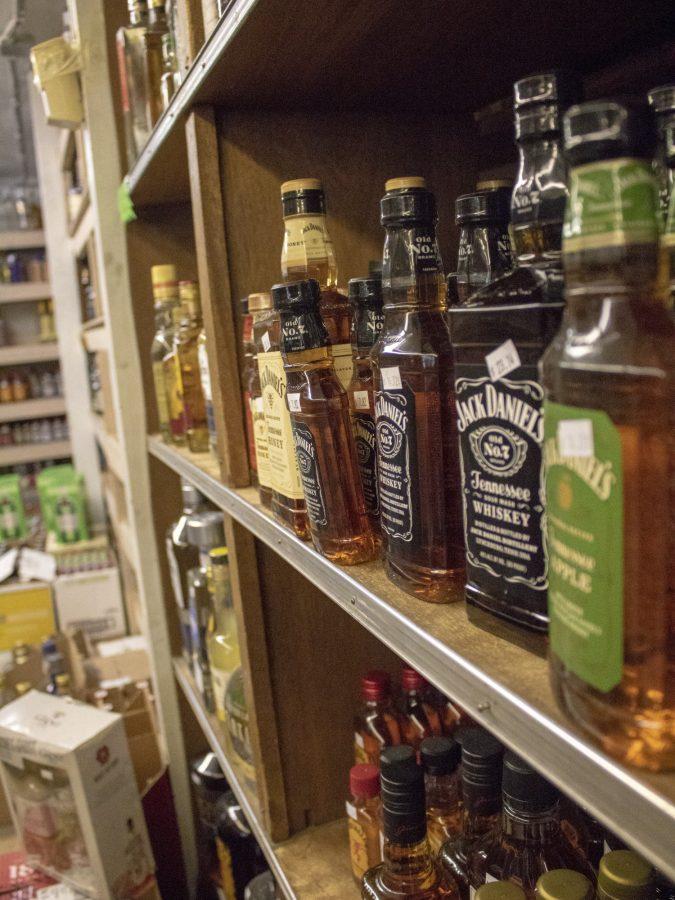The pandemic and subsequent lockdown have led to an increase in harmful alcohol use, according to a study by a Health Sciences researcher at the University of Arizona.
The study was conducted by William Killgore, the director of the Social, Cognitive and Affective Neuroscience Lab in the Department of Psychiatry. It was co-authored by Sara Cloonan, Emily Taylor, Daniel Lucas and Natalie Dailey.
According to the press release, over 5,000 adults were surveyed from all 50 states. An Alcohol Use Disorders Identification Test was placed within the survey. They received around a thousand responses per month from April to September of 2020.
The initial survey in April was not solely about alcohol use. It was a broader questionnaire intended to capture how people were feeling about the pandemic and asked about depression, loneliness or resilience to name some of the topics. The answers to the alcohol-related questions were particularly concerning.
“We collected a thousand subjects and realized we probably need to keep monitoring this,” Killgore said.
The surveys from then on focused on this subject.
The rates of people scoring above the “harmful alcohol use” level doubled during the six months between April and September. There is a higher cutoff called “probable alcohol dependence.” Scores above this cutoff tripled during the same time. The last cutoff on the test is labeled “severe alcohol dependence.” The rate of those scoring above this cutoff quadrupled.
These rates of increase only apply to those who were under lockdown during that time.
Along with this concern, Killgore mentioned that the lockdown created an easier convenience for people to drink while working as homes became office spaces.
“You would never have thought about having six beers at work while you’re sitting there at the desk,” Killgore said. “But now you’re sitting at home it seems okay, but it’s not. You add that up for a year consuming a huge amount of alcohol compared to what you were prior to the pandemic.”
Killgore also pointed out that those affected by this increase were those that transitioned from an office work environment to one at their homes instead. These people also had more to drink in the morning than they would have before. It did not affect people who had been staying home to begin with like those who stay home to take care of the kids or those who are retired.
The study found that the increase in consumption was particularly true for people who lost their job due to COVID-19. It was also particularly true for younger people as well as for males, according to Killgore. The fear, uncertainty and stress can also be attributed to the general increase.
“We know that the younger you start using alcohol and keep using it, the worse off you’re going to be,” Killgore said.
Although some bars remained open during the lockdown if their primary purpose was not selling alcohol, other bars were closed during this time, meaning that alcohol was bought elsewhere like grocery stores.
Time Market, a popular Tucson marketplace and restaurant, saw an increase in alcohol sales since the start of the pandemic. The owner of Time Market, Bree Wilke, attributed the increase to the lack of opportunity to buy alcohol elsewhere. Wilke did not necessarily endorse the correlation between Time Market’s increase in alcohol sales and the increase in harmful alcohol use.
“The increase in alcohol sales that we see is very much related to a lack of restaurant dine-in and/or bar going; folks are making dinner at home and having a nice bottle of wine or need a break from cooking and grab a pizza and a six pack,” Wilke said via email.
Killgore also mentioned psychiatric effects. The increase can lead to higher levels of depression and anxiety. Suicidal thoughts are also more likely if someone is depressed and drinking. Family life at home can be altered from this increase especially because are people spending more time at home as their work or school is now remote.
Killgore also speculated that workplace productivity would wane as those who have increased their drinking will not be able to contribute to the same capacity as before.
“Here we are trying to dig out of this pandemic and get the economy going again. If we’re not quite as productive, that could actually be hampering that ability to recover quickly,” Killgore said.
Follow Noah Cullen on Twitter















